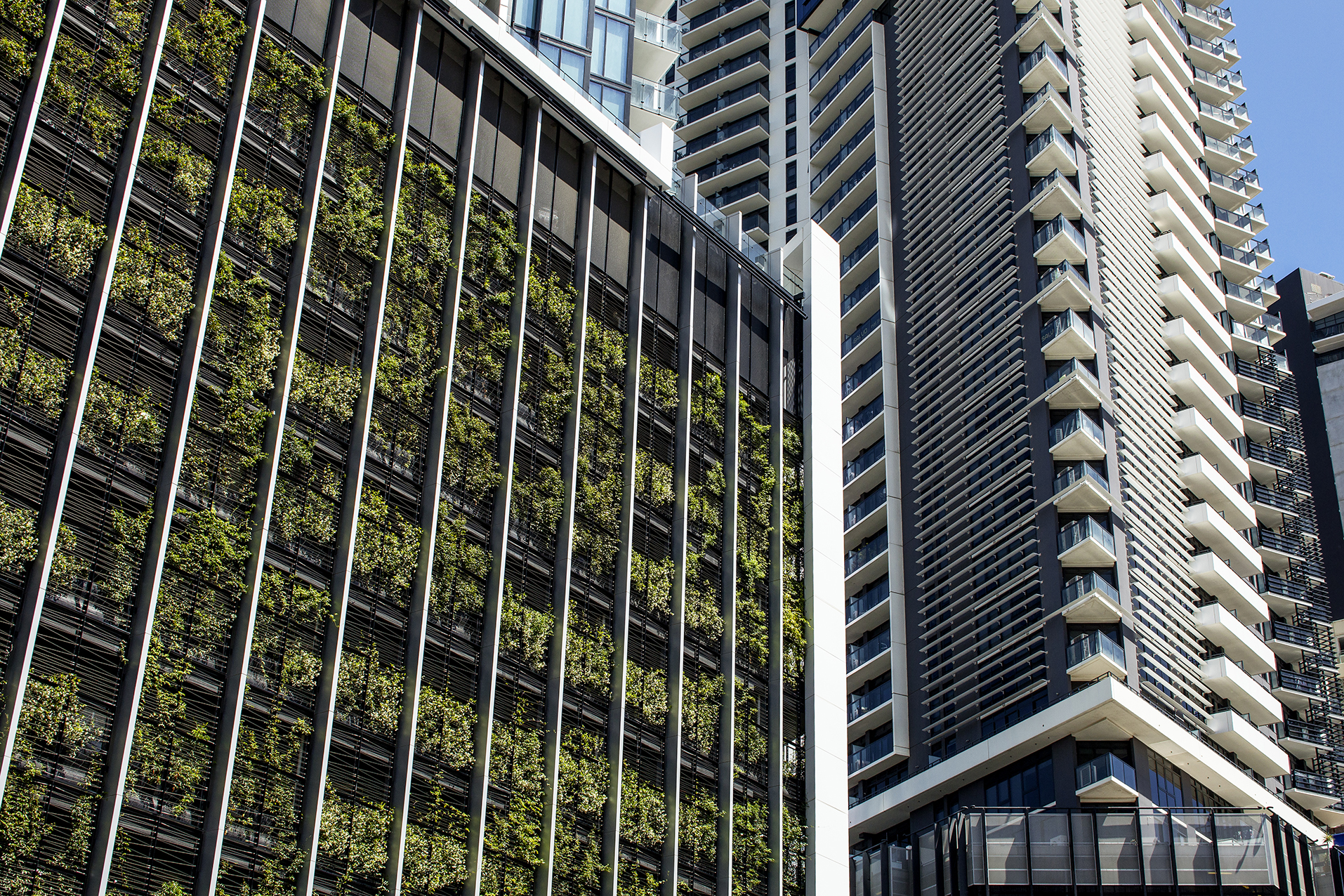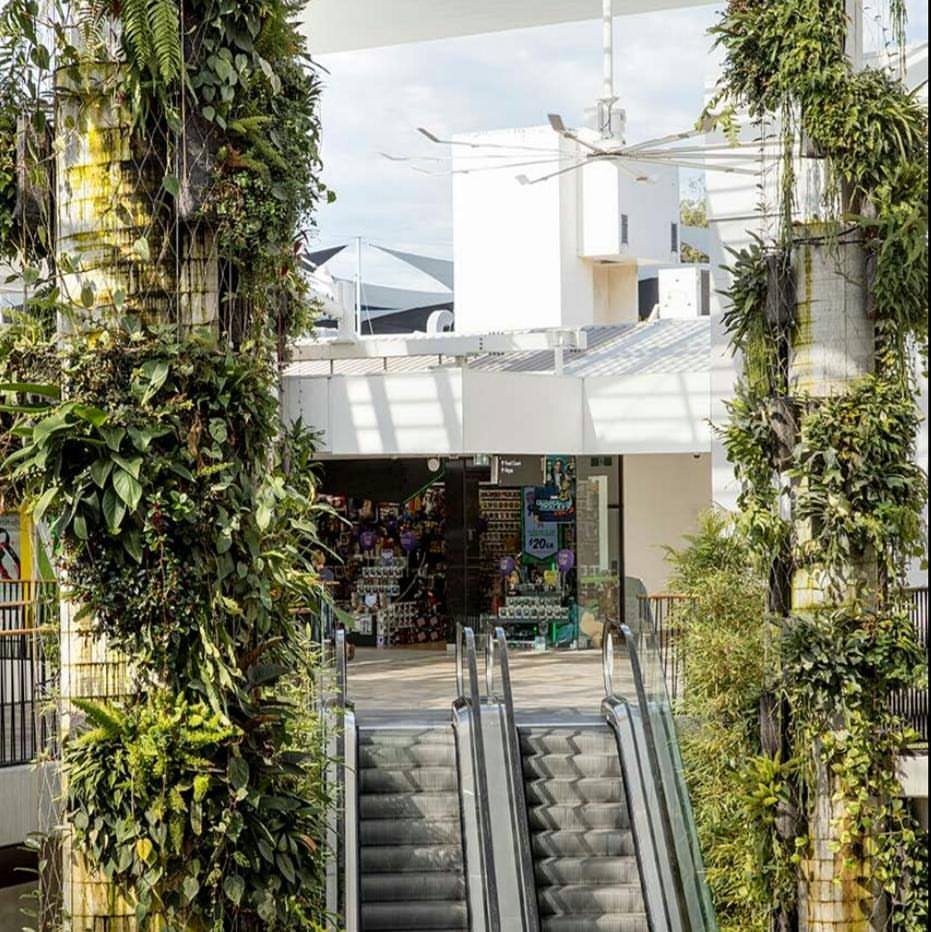Since architectural design is about more than just creating attractive buildings, it’s no surprise that modern design and construction is having an influence on green wall installations.
Here are some examples of this in action.
Sustainability
The desire for greater sustainability of our buildings is a growing trend. Creating sustainable buildings may involve the use of passive solar design, renewable energy, lighter or recycled materials, smart windows and energy efficiency – with the aim of achieving a lower carbon footprint and improving building performance.
Green infrastructure can form part of sustainability principles in several ways – by providing shading, creating cooler internal environments, and by mitigating urban heat island effect.
Healthier buildings
‘Sick building syndrome’ refers to the way in which buildings can negatively affect health. Office buildings have been known to cause various symptoms such as headaches, sore throats, sniffles and breathing problems, which are usually considered to emanate from internal pollutants and stale air.
The desire for healthier buildings is a current trend as it is considered to not only improve wellbeing and productivity, but also reduce staff absenteeism and turnover.
Green wall installations can contribute to healthier buildings by improving air quality, absorbing pollutants and by creating more aesthetically-pleasing environments that have a calming effect on occupants.
Reduced running costs
The high cost of energy has almost everyone looking for ways to reduce running costs. Examples include the use of low-energy lighting, energy-efficient appliances, passive solar design and increased shading.
Green walls and facades can significantly reduce energy costs, particularly during the summer months.

Designing for the future
Given that our built environment is contributing significantly to higher carbon emissions, designing for the impact of climate change has become a high priority.
According to the Green Building Council of Australia, sustainable ‘Green Star’ rated buildings produce 62% fewer greenhouse gas emissions than standard Australian buildings.
Green infrastructure can also help us to reduce the impact of climate change, through the cooling of hard surfaces that would normally absorb solar heat, and through plant irrigation and evaporation and flow-through breezes.
Naturalistic design
Creating buildings that blend and interact with their surrounding environments is a popular and growing trend in the 21st century.
Elements such as curved walls, natural materials and other design features inspired by nature (such as rocks, caves and flowing water) are being used in modern building design.
Green wall installations can also be an important feature. An indoor green wall or facade brings the outdoors inside, while external green walls help to create a structure that is alive and ‘breathing’.
Do you have a project in mind that you feel could benefit from a green wall installation? Get in touch with us for a discussion about how we can help.






































